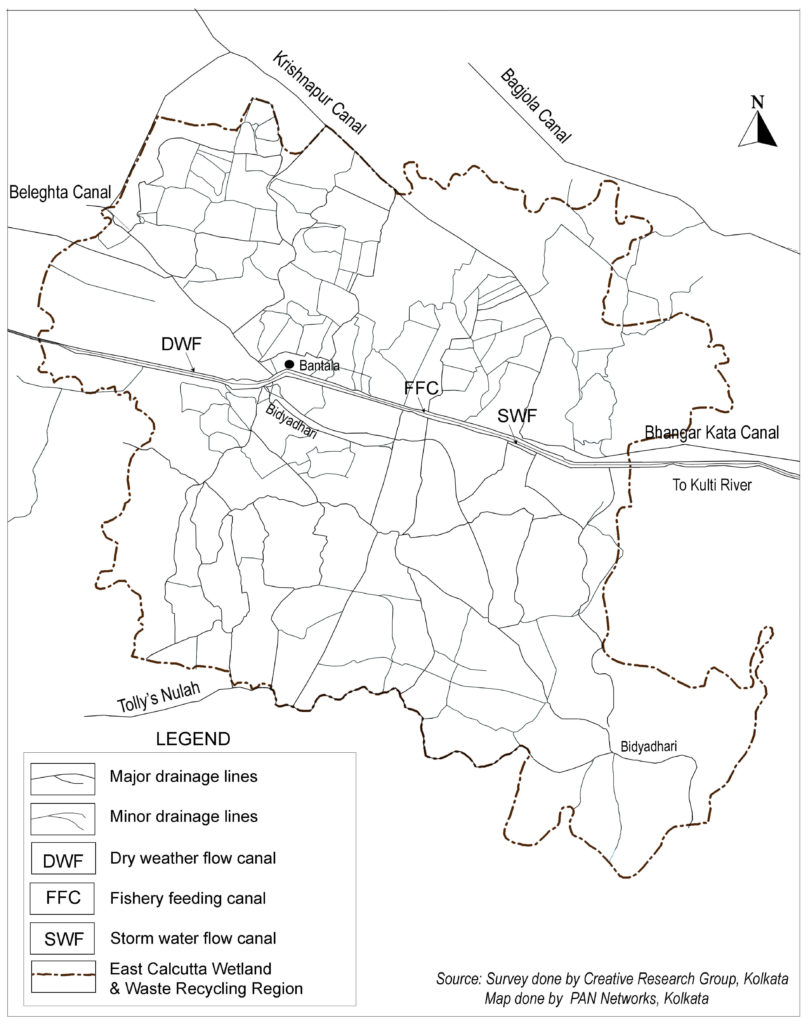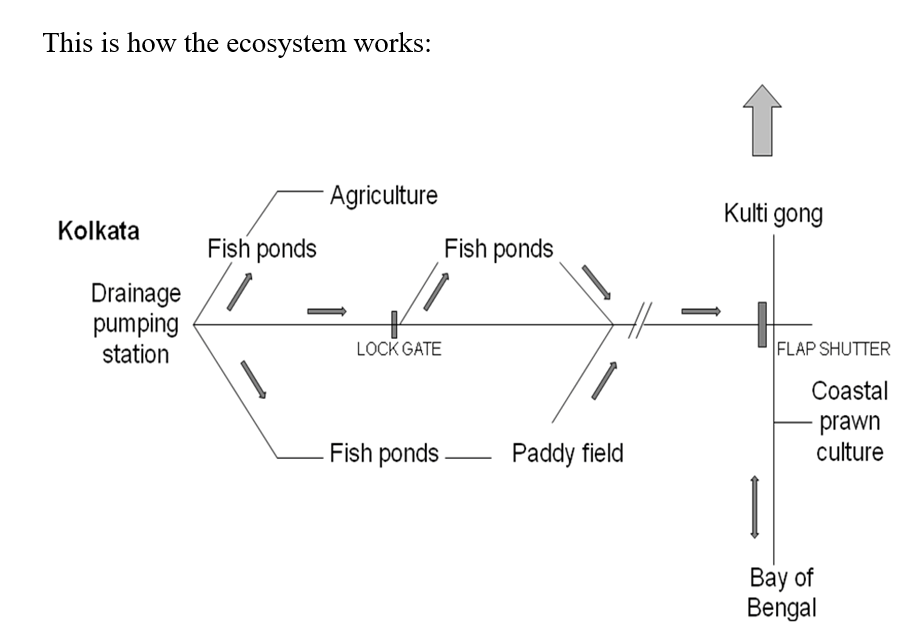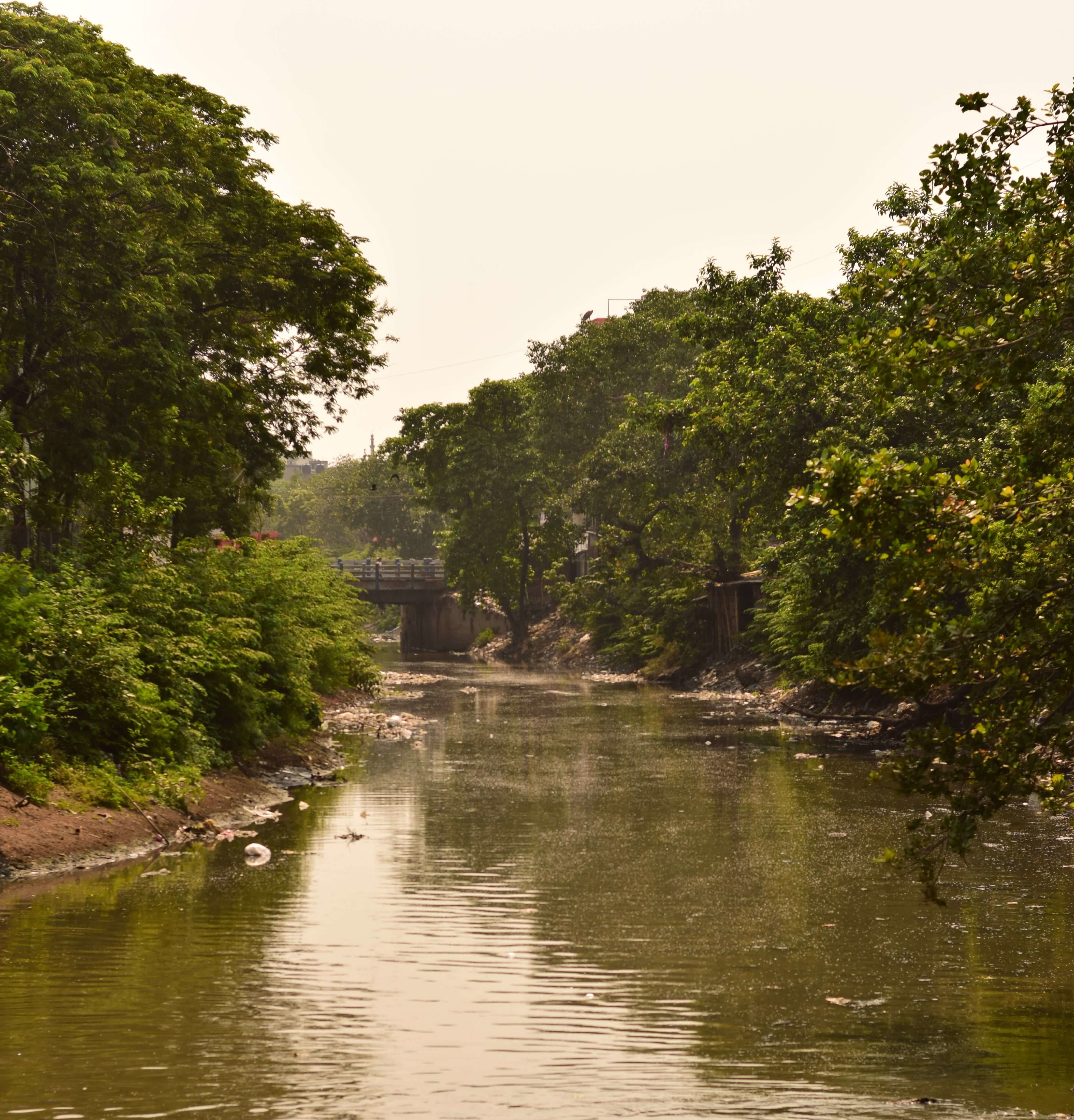Quality
Wastewater flowing to East Kolkata Wetlands (EKW) is domestic in nature. Industries cannot be set up within Kolkata municipal area. The effects of detergent are not creating a cause of worry as yet. Recently a problem is taking a bad turn as illegal plastic units and leather turning boilers are directly allowing their waste to flow into the outfall drainage canals.
Quantity
There is no scientific or reliable way to measure the quantity of wastewater flowing into the fish ponds. Experience of the Irrigation Directorate engineers limits this flow to be something not exceeding 300 MLD (million litres per day).
Hydraulics
The hydraulics of the EKW ecosystem rests upon the main drainage outfall canals, diversion of wastewater from the drainage canals and about 60 km of internal drainage network that reach the wastewater at each fish pond and also carry the discharge from each of them.

Published with permission from Dr Dhrubajyoti Ghosh
Wastewater Canal
Management
In the best of times, the wastewater flow was efficiently distributed to every fish pond using diversion control rules set up amongst the fish pond managers so as to distribute the wastewater equitably. All these controls were immaculately framed and can be read as text book options for managing wastewater as commons. Unfortunately most of those mutually agreed controls have fallen into disuse.

The Natural Wastewater Treatment System
Science of cleaning
Sewage from the outfall channels is routed through a network of carrier channels that reaches the ponds which are called bheris in local parlance. The sunlight that these ponds receive helps in algae-bacteria symbiosis to facilitate algal bloom, and algae are fish feed. E. coli cannot be comprehensively cleaned by conventional sewage treatment plants (STPs), but gets drastically reduced in these waterbodies which behave as oxidation ponds, so the water gets treated here.
Organic loading rate in these fishponds appears to vary between 20 to 70 kg per hectare per day (in the form of bio-chemical oxygen demand). There is a network of channels that is used to supply untreated sewage and to drain out the spent water (effluent) (Fig.1). The cumulative efficiency in reducing the BOD (a measure of organic pollution) of the wastewater is above 80 per cent and that in reducing coliform bacteria is 99.99 per cent on an average. The solar radiation here is about 250 langleys per day, and is adequate for photosynthesis to take place. In fact, the sewage-fed fishery ponds act as solar reactors. This solar energy is tapped by a dense plankton population, which, in turn, the fish consume. While the plankton plays a highly significant role in degrading the organic matter in the wastewater, tackling plankton overgrowth does become a problem in terms of pond management. It is at this critical phase of the ecological process that the fish play an important role by grazing on the plankton. The two-fold role played by the fish is indeed crucial–they maintain a balance of the plankton population in the pond and convert the available nutrients in the wastewater into readily consumable form (viz. fish) for the humans (Fig.2). This is the complex ecological process that has been adopted by the fish farmers of the East Kolkata Wetlands. They have developed a mastery over these resource recovery activities.
Fig.2: Fish as an ecological manipulator (Source: Ghosh 2005)

Utilised with permission from Dhrubajyoti Ghosh’s Ecology and Traditional Wetland Practice: Wastewater Utilisation in the East Calcutta Wetlands (2005).

[Previous Page: The Place] [Next Page: The Community]

